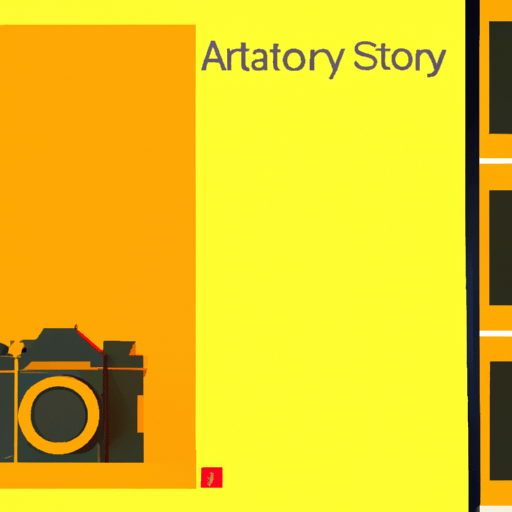
-
Table of Contents
- Applying Minimalism in Interface Design
- What is Minimalism in Interface Design?
- The Benefits of Minimalism in Interface Design
- Examples of Minimalist Interface Design
- 1. Apple
- 2. Google
- 3. Dropbox
- Applying Minimalism in Interface Design
- 1. Focus on Essential Elements
- 2. Use Ample White Space
- 3. Limit Color Palette
- 4. Prioritize Typography
- 5. Simplify Navigation
- Case Study: Airbnb
- Conclusion
Applying Minimalism in Interface Design

Interface design plays a crucial role in creating a positive user experience. It is the bridge between users and technology, allowing them to interact seamlessly with digital products. In recent years, minimalism has emerged as a popular design approach, focusing on simplicity and clarity. This article explores the concept of minimalism in interface design, its benefits, and how it can be effectively applied to create intuitive and user-friendly interfaces.
What is Minimalism in Interface Design?
Minimalism in interface design is a design approach that emphasizes simplicity, clarity, and the removal of unnecessary elements. It aims to create interfaces that are visually appealing, easy to understand, and intuitive to use. Minimalist interfaces often feature clean lines, ample white space, and a limited color palette. By reducing visual clutter and focusing on essential elements, minimalism allows users to focus on the core functionality of a digital product.
The Benefits of Minimalism in Interface Design
Minimalism offers several benefits when applied to interface design:
- Enhanced User Experience: Minimalist interfaces provide a seamless and intuitive user experience. By removing unnecessary elements, users can easily navigate through the interface and focus on the core functionality of the product.
- Improved Readability: Minimalist designs often feature ample white space and clear typography, making the content more readable. This is particularly important for interfaces that involve a lot of text, such as blogs or news websites.
- Faster Loading Times: Minimalist interfaces typically have fewer elements and smaller file sizes, resulting in faster loading times. This is crucial in today’s fast-paced digital world, where users expect instant access to information.
- Increased Accessibility: Minimalist designs are often more accessible to users with disabilities. By focusing on simplicity and clarity, designers can create interfaces that are easier to navigate and understand for all users.
- Timeless Design: Minimalist designs have a timeless quality that can withstand changing design trends. By focusing on essential elements and avoiding excessive ornamentation, minimalist interfaces can remain relevant and visually appealing for years to come.
Examples of Minimalist Interface Design
Several well-known digital products have successfully implemented minimalism in their interface design:
1. Apple
Apple is renowned for its minimalist design approach, which is evident in its products such as the iPhone and MacBook. The interfaces feature clean lines, ample white space, and a limited color palette, allowing users to focus on the content and functionality of the devices.
2. Google
Google’s search engine interface is a prime example of minimalism. The homepage consists of a simple search bar, the Google logo, and a few additional options. By removing unnecessary elements, Google provides users with a clean and focused search experience.
3. Dropbox
Dropbox, a cloud storage service, has a minimalist interface that allows users to easily navigate and manage their files. The design features a clean layout, clear typography, and intuitive icons, making it easy for users to understand and interact with the platform.
Applying Minimalism in Interface Design
When applying minimalism in interface design, several key principles should be considered:
1. Focus on Essential Elements
Identify the core functionality and purpose of the digital product. Remove any unnecessary elements that do not contribute to the user experience or distract users from achieving their goals. By focusing on essential elements, the interface becomes more intuitive and user-friendly.
2. Use Ample White Space
White space, also known as negative space, refers to the empty space between elements in a design. It helps create a sense of balance, improves readability, and allows important elements to stand out. By incorporating ample white space, the interface feels less cluttered and more visually appealing.
3. Limit Color Palette
Choose a limited color palette that complements the brand and enhances the user experience. Too many colors can be overwhelming and distract users from the core functionality of the product. By using a limited color palette, the interface becomes more cohesive and visually pleasing.
4. Prioritize Typography
Typography plays a crucial role in minimalist interface design. Choose clear and legible fonts that are easy to read across different devices and screen sizes. Pay attention to font sizes, line spacing, and hierarchy to ensure that the content is easily scannable and digestible.
5. Simplify Navigation
Navigation is a critical aspect of interface design. Simplify navigation by using clear labels, intuitive icons, and logical grouping of elements. Avoid overwhelming users with too many options and prioritize the most important actions or sections.
Case Study: Airbnb
Airbnb, a popular online marketplace for lodging, has successfully implemented minimalism in its interface design. The website features a clean and intuitive design that allows users to easily search for accommodations and make bookings.
The Airbnb interface follows the principles of minimalism by focusing on essential elements, using ample white space, and limiting the color palette. The search functionality is prominently displayed, allowing users to quickly find accommodations based on their preferences. The use of high-quality images and clear typography enhances the overall user experience.
By applying minimalism, Airbnb has created an interface that is visually appealing, easy to navigate, and intuitive to use. This has contributed to the platform’s success and positive user feedback.
Conclusion
Minimalism in interface design offers numerous benefits, including enhanced user experience, improved readability, faster loading times, increased accessibility, and timeless design. By focusing on essential elements, using ample white space, limiting the color palette, prioritizing typography, and simplifying navigation, designers can create intuitive and user-friendly interfaces.
Successful examples of minimalism in interface design can be seen in companies like Apple, Google, and Dropbox. These companies have embraced minimalism to create visually appealing and user-centric interfaces.
When applying minimalism in interface design, it is important to consider the specific needs and goals of the digital product. By understanding the core functionality and purpose, designers can effectively remove unnecessary elements and create interfaces that provide a seamless and intuitive user experience.
Overall, minimalism in interface design is a powerful approach that can greatly enhance the usability and aesthetics of digital products. By embracing simplicity and clarity, designers can create interfaces that are visually appealing, easy to understand, and intuitive to use.
